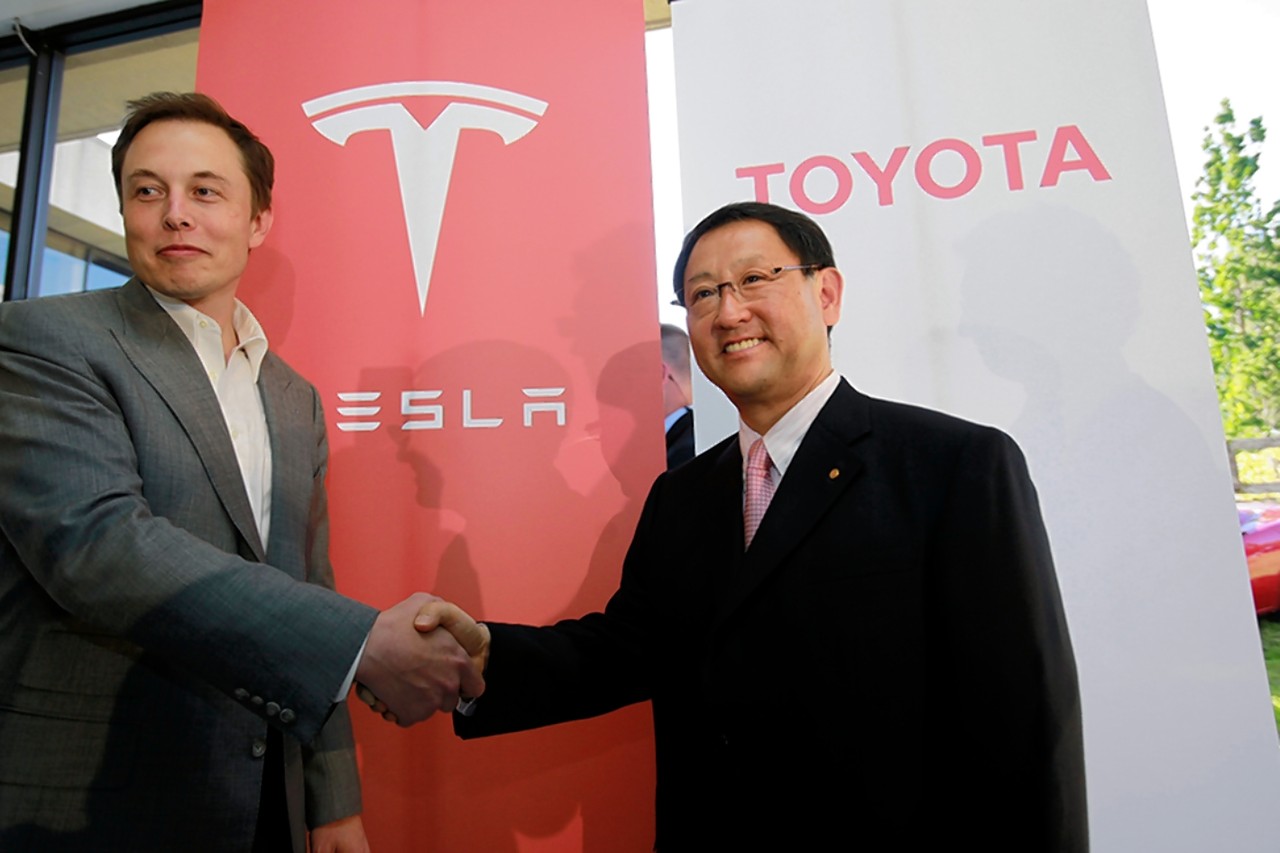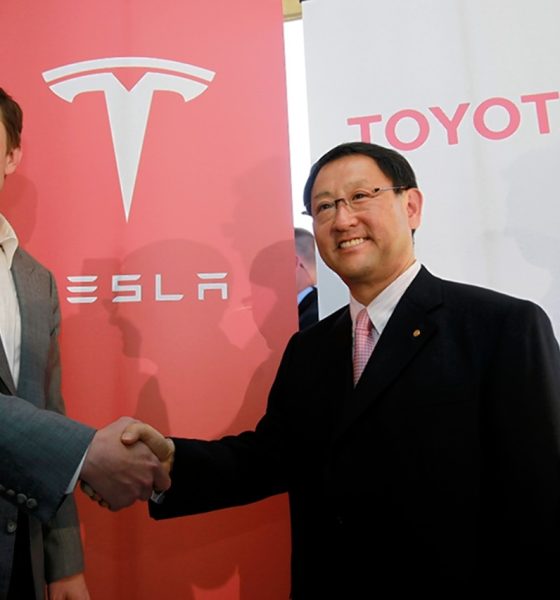

Investor's Corner
Is it time for Tesla to partner up with another automaker? I think so.
This is a free excerpt of our weekly member-only Newsletter. Each week, we give you our take on the biggest stories of the week, our favorite photos & videos and much more. Sign up for Teslarati’s newsletters to receive a preview of our membership program.
Tesla’s stock has continued to slide over the last month, and not for one particular reason. The company has, by far, the best electric vehicles in the world, with the Model S, Model X, and Model 3 leading their segments by miles. Despite this, investors believe that the company is under immense pressure.
Elon Musk hasn’t really gotten the message. He’s plowing ahead with the multi-billion dollar Gigafactory in China, aggressively expanding the Model 3 to new countries, and doubling down on commitments to the super-delayed (but incredible) solar roof. Most other executives would throttle back expansion, allowing the company to widen profits and make investors happy. Musk isn’t like most executives (if you didn’t know that already?). He ignores the idea of ‘corporate strategy,’ and is far more interested in pushing the limit on what is possible. But, with over 40,000 employees and annualized production nearing 400,000 units, the company is entering a period in time in which long-term strategic planning would add tremendous value.
Time to deploy some strategery.
Let’s start with the Model Y. Or I should say, let’s begin with Tesla’s most important vehicle. The SUV market is exploding, and it’s not showing any signs of slowing down. The global SUV market grew from 9.8M units in 2013 to an estimated 23.8M units in 2020. That’s nearly 14% annualized growth over the last seven years. While Tesla has the Model X, it’s priced well above the average consumer’s budget and targets the highest-end of the market.
On the other hand, the Model Y is poised to enter the hottest market in the world: mid-sized crossovers. With world-class technology and an affordable price, it is certainly going to be Tesla’s most popular vehicle. To meet demand, Tesla is going to need to scale production faster and more efficiently than ever before. The only problem? Tesla is already busting out of their massive Fremont facility, and their new facility in China will likely only feed the Asian market (remember the last Chinese-built car you saw on US or European roads? Me neither).
So what does the company do? Build a car in the Gigafactory? Expand Fremont further? Both options aren’t cheap or super fast. Well, let’s jump back to that point I made about long-term corporate strategy. Tesla is at a point where it can’t afford (without raising more cash) to start construction on another US or European factory, the company is already building a Chinese factory to meet existing demand is near cash-strapped. So what should they do? It’s time to partner up with another automaker, specifically Fiat Chrysler.
An Unlikely Marriage.
Fiat Chrysler (FCA) is one of the only automakers holding out on large investments into EV technology, GM is betting big and VW is betting even bigger. With Tesla’s cutting edge motor and battery technology, FCA could leap ahead of their rivals and electrify their fleet. First, the company could start by underpinning a vehicle -platform with Tesla’s powertrain, bringing more scale to Tesla battery operations and forgoing the multi-billion dollar expansion into the technology. Automakers have done these sort of partnerships for years. FCA already shares some diesel engines with GM, Daimler has borrowed VW engines, and most recently Toyota is borrowing a BMW engine for the iconic Supra.
(Photos: Tesla, Ram; Graphic: Christian Prenzler)
So what’s in it for Tesla? Let’s start with the main stage: cash. Musk isn’t interested in slowing down his global expansion, and he shouldn’t be. The company has tremendous demand and is on the cusp of launching several new products: Model Y, Semi, Roadster, and the Solar Roof. A large infusion of cash would allow the company to continue pushing the pedal to the metal. FCA has over $12B in cash, so the company could invest several billion dollars into Tesla. Outside of cash, FCA can lend some much-needed expertise in manufacturing and even some production capacity at one of the company’s two-dozen factories in North America.
I get it, teaming up with FCA doesn’t sound S3XY. But by teaming up with one of the largest automakers, Tesla gains a leg up in manufacturing and an infusion of cash that would allow Musk to continue investing heavily in expansion. What did you think of Tesla partnering with FCA?
Don’t miss this weekly column, our weekly commentary on the biggest stories, exclusive photos and much more. Become a member today for just $3/month.
Disclaimer: This column does not necessarily reflect the opinion of Teslarati and its owners. Christian Prenzler does not have a position in Tesla Inc. or any of its competitors and does not have plans to do so in the next 30 days.

Investor's Corner
Tesla stock closes at all-time high on heels of Robotaxi progress

Tesla stock (NASDAQ: TSLA) closed at an all-time high on Tuesday, jumping over 3 percent during the day and finishing at $489.88.
The price beats the previous record close, which was $479.86.
Shares have had a crazy year, dipping more than 40 percent from the start of the year. The stock then started to recover once again around late April, when its price started to climb back up from the low $200 level.
This week, Tesla started to climb toward its highest levels ever, as it was revealed on Sunday that the company was testing driverless Robotaxis in Austin. The spike in value pushed the company’s valuation to $1.63 trillion.
Tesla Robotaxi goes driverless as Musk confirms Safety Monitor removal testing
It is the seventh-most valuable company on the market currently, trailing Nvidia, Apple, Alphabet (Google), Microsoft, Amazon, and Meta.
Shares closed up $14.57 today, up over 3 percent.
The stock has gone through a lot this year, as previously mentioned. Shares tumbled in Q1 due to CEO Elon Musk’s involvement with the Department of Government Efficiency (DOGE), which pulled his attention away from his companies and left a major overhang on their valuations.
However, things started to rebound halfway through the year, and as the government started to phase out the $7,500 tax credit, demand spiked as consumers tried to take advantage of it.
Q3 deliveries were the highest in company history, and Tesla responded to the loss of the tax credit with the launch of the Model 3 and Model Y Standard.
Additionally, analysts have announced high expectations this week for the company on Wall Street as Robotaxi continues to be the focus. With autonomy within Tesla’s sights, things are moving in the direction of Robotaxi being a major catalyst for growth on the Street in the coming year.
Elon Musk
Tesla needs to come through on this one Robotaxi metric, analyst says
“We think the key focus from here will be how fast Tesla can scale driverless operations (including if Tesla’s approach to software/hardware allows it to scale significantly faster than competitors, as the company has argued), and on profitability.”

Tesla needs to come through on this one Robotaxi metric, Mark Delaney of Goldman Sachs says.
Tesla is in the process of rolling out its Robotaxi platform to areas outside of Austin and the California Bay Area. It has plans to launch in five additional cities, including Houston, Dallas, Miami, Las Vegas, and Phoenix.
However, the company’s expansion is not what the focus needs to be, according to Delaney. It’s the speed of deployment.
The analyst said:
“We think the key focus from here will be how fast Tesla can scale driverless operations (including if Tesla’s approach to software/hardware allows it to scale significantly faster than competitors, as the company has argued), and on profitability.”
Profitability will come as the Robotaxi fleet expands. Making that money will be dependent on when Tesla can initiate rides in more areas, giving more customers access to the program.
There are some additional things that the company needs to make happen ahead of the major Robotaxi expansion, one of those things is launching driverless rides in Austin, the first city in which it launched the program.
This week, Tesla started testing driverless Robotaxi rides in Austin, as two different Model Y units were spotted with no occupants, a huge step in the company’s plans for the ride-sharing platform.
Tesla Robotaxi goes driverless as Musk confirms Safety Monitor removal testing
CEO Elon Musk has been hoping to remove Safety Monitors from Robotaxis in Austin for several months, first mentioning the plan to have them out by the end of 2025 in September. He confirmed on Sunday that Tesla had officially removed vehicle occupants and started testing truly unsupervised rides.
Although Safety Monitors in Austin have been sitting in the passenger’s seat, they have still had the ability to override things in case of an emergency. After all, the ultimate goal was safety and avoiding any accidents or injuries.
Goldman Sachs reiterated its ‘Neutral’ rating and its $400 price target. Delaney said, “Tesla is making progress with its autonomous technology,” and recent developments make it evident that this is true.
Investor's Corner
Tesla gets bold Robotaxi prediction from Wall Street firm
Last week, Andrew Percoco took over Tesla analysis for Morgan Stanley from Adam Jonas, who covered the stock for years. Percoco seems to be less optimistic and bullish on Tesla shares, while still being fair and balanced in his analysis.

Tesla (NASDAQ: TSLA) received a bold Robotaxi prediction from Morgan Stanley, which anticipates a dramatic increase in the size of the company’s autonomous ride-hailing suite in the coming years.
Last week, Andrew Percoco took over Tesla analysis for Morgan Stanley from Adam Jonas, who covered the stock for years. Percoco seems to be less optimistic and bullish on Tesla shares, while still being fair and balanced in his analysis.
Percoco dug into the Robotaxi fleet and its expansion in the coming years in his latest note, released on Tuesday. The firm expects Tesla to increase the Robotaxi fleet size to 1,000 vehicles in 2026. However, that’s small-scale compared to what they expect from Tesla in a decade.
Tesla expands Robotaxi app access once again, this time on a global scale
By 2035, Morgan Stanley believes there will be one million Robotaxis on the road across multiple cities, a major jump and a considerable fleet size. We assume this means the fleet of vehicles Tesla will operate internally, and not including passenger-owned vehicles that could be added through software updates.
He also listed three specific catalysts that investors should pay attention to, as these will represent the company being on track to achieve its Robotaxi dreams:
- Opening Robotaxi to the public without a Safety Monitor. Timing is unclear, but it appears that Tesla is getting closer by the day.
- Improvement in safety metrics without the Safety Monitor. Tesla’s ability to improve its safety metrics as it scales miles driven without the Safety Monitor is imperative as it looks to scale in new states and cities in 2026.
- Cybercab start of production, targeted for April 2026. Tesla’s Cybercab is a purpose-built vehicle (no steering wheel or pedals, only two seats) that is expected to be produced through its state-of-the-art unboxed manufacturing process, offering further cost reductions and thus accelerating adoption over time.
Robotaxi stands to be one of Tesla’s most significant revenue contributors, especially as the company plans to continue expanding its ride-hailing service across the world in the coming years.
Its current deployment strategy is controlled and conservative to avoid any drastic and potentially program-ruining incidents.
So far, the program, which is active in Austin and the California Bay Area, has been widely successful.








